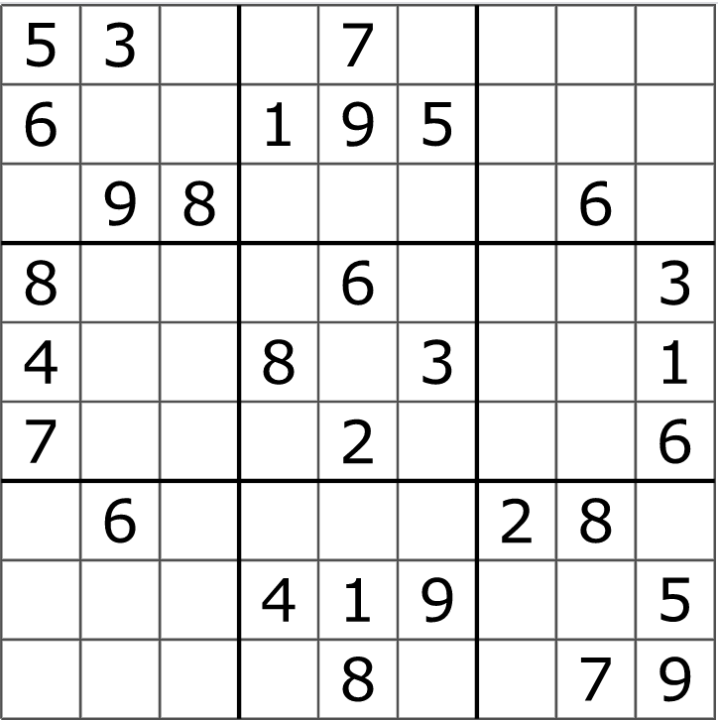
Sudoku Rules
Episode 1
The Trip
A few months ago, on a family trip to Mexico, I found myself in an unusual situation. On the second leg of our journey, with a couple of hours still remaining before our plane reached sunny Ixtapa, I suddenly realized I had nothing to do.
As a proud father of three boys, I am not used to this. A typical trip over the past nine years would involve walking the aisle with a crying child on my lap, drawing race cars, getting food out of a backpack, looking apologetically at other passengers, reading out loud making funny voices, asking the flight attendant for more water, changing diapers, coloring, taking kids to the bathroom, playing with stickers, and picking up random objects from the floor for the 42nd time.
But as if by magic, on this fateful flight in our journey to Mexico, all the kids were entertained, and I had nothing to do. To pass the time I started browsing the airline magazine. After a solid fifteen minutes looking at maps with flight routes and fantasizing about adventures in faraway lands, I ended up on the puzzles page. There were three puzzles, labeled “Easy”, “Medium”, and “Hard”. And at the top of the page a word that would become my obsession over the next couple of months: “Sudoku”.
The Puzzle
Sudoku is a number puzzle, typically composed of a 9 x 9 grid (also called “board”) with digits so that each column, each row, and each of the nine 3 x 3 sub-grids that make up the grid (also called "boxes") contain all of the digits from 1 to 9. Puzzles provide a partially completed board, in which the player needs to find a solution for.
In this sample puzzle, for instance, the cell on the 6th column of the 1st row needs to have a value of 8. The fact that there’s already a cell with value of 8 on the 3rd row, and another cell with value of 8 on the 4th column, leaves just a single cell in the second box that could possibly hold the value 8.
I had heard about Sudoku puzzles, but I had never really considered trying one. I grabbed a pencil from one of the kids and started with the “Easy” puzzle. It took me quite some time (and I tore the paper in one spot after erasing too many times) but I eventually completed the puzzle. Feeling confident, I made my way to the “Medium” puzzle but could not manage to get it right before we arrived at our destination.
One week later we flew back home. As soon as I boarded the plane, I eagerly grabbed the flight magazine and, with a pencil in hand, I committed to not giving up until I conquered both the “Medium” and “Hard” puzzles. When we finally got home and all the suitcases and children had been safely carried inside, I downloaded a Sudoku app on my phone. My free time hasn’t been the same. Whenever I need to relax and forget about the world, I play a game. Or two. Or twenty.
Over time, I began developing a few strategies to solving the puzzles. I discovered that each time I found a value for a cell I could then apply those same strategies to the cell with the newfound value. It was all about consistently enforcing the rules behind each strategy, whenever new values became available. It dawned on me that was exactly what inference engines were good at.
As luck would have it, I happen to be the product manager for one of the greatest inference engines on the planet, FICO® Blaze Advisor®. I set myself the challenge of using the optimized inference engine, along with a few other advanced features, of FICO’s industry-leading decision rules management solution to solve Sudoku puzzles.
You can read the rest of my Sudoku adventure here

Professional Photographer and Video Producer
3yOMG! Are you serious? I recently downloaded an APP called "Elevate" to improve my English skills.
GMAT & SAT Tutor
3yWaiting 4 part too 😊
Sr. Director, Head of Iberia Sales en FICO®
3yThis is great, Fernando!. Thanks for sharing